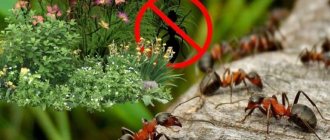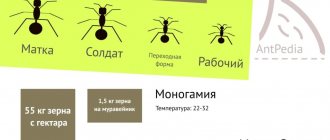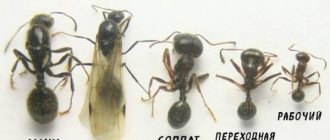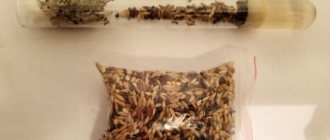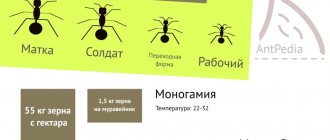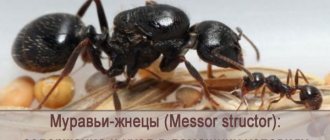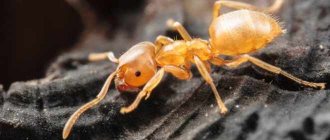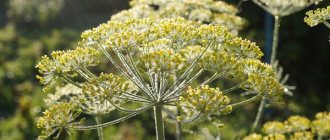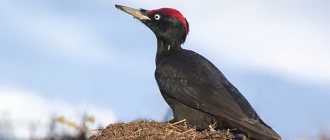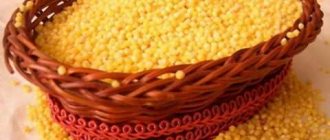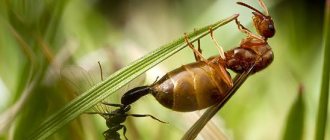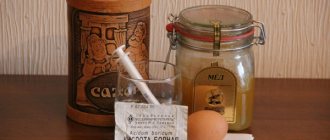The relationship between humans and domestic animals has centuries-old traditions. The most popular pets today are, of course, charming, loyal dogs and charming, independent cats. But what if you are thinking about a pet, but there is not enough time for communication and care. Consider the funny, interesting, unusual, and most importantly, unpretentious ants living in home ant farms.
These intelligent kids have long surprised people with their abilities and high social organization of ant colonies. And observing and caring for ants has become so easy with the advent of formicaria - ant farms. All that remains is to decide: what are the differences and how to choose ants for the farm?
More than 11 thousand species of ants are found in nature. They build their colonies in hot deserts and cold taiga. Some collect nectar and plant seeds, others prefer to hunt. To understand which ants are suitable for formicaria, it is important to know that the microclimate, living conditions and nutrition are individual for each species.
Ant food
Many species of ants require live food in their diet. For example, some even hunt butterflies, others breed aphids for their sweet syrup from flowers, buds, trees, etc.
Other farm ants eat exclusively cereal crops. This is also why they got the name harvester ants.
When dealing with other species, you will have to raise other types of crops or insects, such as mealworms, pupae, etc. And all this is just to feed the ants. Naturally, this is not suitable for everyone and the majority, especially amateurs, prefer to breed reapers, as they are the most unpretentious in terms of feeding.
Big ants for a beginner
People who are superficially familiar with ants present these insects as something small, insignificant, and unworthy of attention. Goosebumps, ants - that's what they call them. Indeed, many representatives of the Earth’s myrmecofauna are not large in size. And this is justified: it is easier for kids to remain unnoticed and penetrate anywhere, and their apparent weakness is compensated by their numbers: a crowd of nimble little fighters easily defeats any large insect.
But for many anti-keepers, it is the size of an individual that is the decisive factor when choosing pets. Lasius seem too small, only 4-5 mm. What about the reapers? Large workers Messor muticus (structor) can reach almost 1 cm! They look impressive against the backdrop of lasius, myrmica and tetramorium. But such individuals appear in the family late and in small numbers. What to do if you want really big ants? Let's look at these.
- Domestic ants.
Large ants are found in our country. These are woodborers - Camponotus herculeanus, Camponotus ligniperda, Camponotus vagus and several other similar species. The first species among them is considered the champion: the length of the soldiers is about 17 mm! It is not for nothing that this camponotus received the name in honor of the ancient Greek hero Hercules (Hercules).
Camponotuses carve out homes in dry wood using powerful jaws. Their families rarely reach more than 5,000 individuals and develop slowly. The main factor that makes our camponotuses unpopular for keeping is wintering. The period when ants do not reproduce, sit passively in the nest and need low temperatures can take 3-6 months! Not everyone will decide to part with their pets resting in the refrigerator for six months. Camponotus need to be prepared for wintering for a long time and carefully in order for it to be successful. Even so, ants can suddenly enter summer diapause, spending another couple of months in it.
- Tropical ants.
The hot climate of the tropics does not force ants to hibernate; they can develop all year round. There is also plenty of food, which is why the bulk of the really big ants are concentrated there. For example, Dinomyrmex and Dinoponera with a body size of 30 mm. But they are very rare and, as a result, very expensive. Yes, and very demanding in terms of conditions of detention. However, there are large tropical ants that are more often kept at home. Let's meet them!
Camponotus singularis is an Asian camponotus and one of the largest available commercially. The size of the soldiers reaches 20 mm.
These giants live in the soil and therefore require high humidity in the nest. Despite their size, ants are timid and slow, preferring to collect dead insects. They look beautiful and impressive, but tenderness, demandingness and the fact that queens sometimes die for no apparent reason do not contribute to the popularity of singularis.
Pseudoneoponera rufipes is also a guest from Asia, a large ant of the subfamily Ponerinae. If in Camponotus singularis only the soldiers are two centimeters long (and the workers are about 1 cm), then all the pseudoneoponeras are 15-18 mm.
Although their families are small (no more than 200-300 individuals), the stern appearance of even 50 huge ants in a formicarium already evokes respect. Pseudoneoponeras have a long stinger; they never use it in an attack, attacking victims with strong mandibles or collecting dead insects. In defense, they hiss and release foam from the end of their abdomen (like from a fire extinguisher), which is why they are called “firefighter ants.” They are more forgiving than Camponotus singularis, but still require careful humidity control and frequent feeding of a variety of insects.
Harpegnathos venator is a desirable object for those who are not particularly familiar with this ant, but already dream of owning one. Harpegnathos is comparable in size to the previous species, but more graceful.
They have a simply fantastic appearance: huge, keen eyes and long mandibles that resemble tweezers. These are solitary hunters who stalk their prey for a long time, carefully sneak up on it, and then rush forward, grab and sting, paralyzing the victim with strong poison. But not only the danger of stings awaits unwary new myrmekeepers: Harpegnathos venator needs a special hydration regime, which is determined intuitively. Their cocoons should be kept in almost dry chambers, and the rest of the brood should be kept in damp ones. The slightest disturbance causes the death of the pupae and their consumption by adult ants. In addition, harpegnathos need frequent and varied feeding.
3.What big ants should a beginner get??
There is an alternative that does not look so impressive, but is clearly superior to the usual trifle. These are, for example, unpretentious brothers of the complex singularis in the genus Camponotus - Camponotus parius and Camponotus nicobarensis. Workers of these species will not get lost in the farm: their size is up to 10 mm, and soldiers - up to 13! Ants are nimble, active and inquisitive. If you provide them with a spacious arena with decorations (all 4ants formicariums provide plenty of space for a landscape designer), they will explore it regularly.
Camponotus parius has a discreet, dull color at first glance, but in good lighting you will notice how thousands of tiny hairs on the body shimmer with silver and gold, creating a pattern.
Camponotus nicobarensis is even more beautiful, with a variegated cover of red and orange contrasting with black stripes. Older workers are darker, while younger soldiers display a bright red head.
These two Asian camponotuses are very hardy, do not need diapause, heating or careful humidity control, and will happily accept any food crop (the Turkmen cockroach, for example, is perfect for them) and sugar syrup. What you need if you don’t want to get ordinary small ants!
It turns out that the larger the ant, the more difficult it is to keep. Therefore, we would not recommend that beginners rush into making a choice. It is better to gain experience on simple species, and then think about the giants of the ant world.
Benefits of Feeding Reaper Ants
Unlike the others, reapers are more convenient and unpretentious in breeding. For proper nutrition, you don’t have to add food to them every two days. In addition, you do not need to breed any livestock, which brings a lot of trouble to many.
Therefore, if you breed Messor Structor ants, then you don’t need to grow anything or anyone else except the insects themselves. At the same time, they are developing well. Just keep in mind that food for harvester ants should consist of several varieties of grains.
What types of ant farms are there?
Regardless of the design, all formicaria consist of several main parts. This:
- frena - an area that imitates the space around an anthill. It is intended for feeding ants, they take out garbage here, and in addition, all the decor is located in the arena.
- nest block - chambers that play the role of the interior of an anthill. There is a queen chamber, “rooms” for larvae and pupae, and for harvester ants there are also compartments for storing grain reserves.
- humidification chambers are chambers isolated from the rest of the farm, and into which water is poured to maintain the required level of humidity.
Formicaria can be classified according to their layout and material of manufacture.
Ant farm layout
Ant farms are divided into 3 types:
- horizontal;
- vertical;
- tower
The name of the former is due to the fact that the nesting chambers in them are located horizontally, and the myrmikeeper watches the pets from above, through a transparent cover. This solution allows you to examine the “life” of insects in all details, however, horizontal formicaria take up quite a lot of space, so space for them must be provided in advance.
In vertical farms, chambers and passages are arranged accordingly, in several floors. Such solutions are much more compact, and at the same cost, the sites usually accommodate a larger colony compared to horizontal ones, but it is more difficult to observe ants in them.
Tower formicariums are a cylindrical container, the chambers in which are located in a circle, and the arena is either next to or at the top of the cylinder. Rarely found on sale.
Material for making ant farms
Most often, formicaria are made from the following materials:
- acrylic;
- gypsum;
- wood;
- priming;
- gel.
Each of these materials has its own characteristics and specifics, which need to be considered in more detail.
Acrylic trusses are made from acrylic sheets glued or tightly twisted together, into which passages and chambers are made with a laser cutter. They are vertical and horizontal. This solution can be safely called universal, since the acrylic formicarium is durable, easy to care for, and suitable for the vast majority of ant species. Thanks to the drip effect, the water entering the humidification chambers spreads throughout the farm, maintaining the required microclimate in it. In addition, manufacturers quite often make a plaster insert that captures part of the chambers. It accumulates moisture, allowing the formicarium to be moistened less often and creating a humidity gradient, which is especially important for granivorous ant species.
Gypsum trusses are also quite popular, especially with experienced myrmickeepers. The body and arena in them are usually made of acrylic or plexiglass, and the passages and chambers are carved inside a solid mass of plaster. Such a farm retains moisture well, and therefore is perfect for keeping tropical species, but you need to remember that the risk of mold is also higher here, so gypsum farms are suitable for keepers who already have at least a little experience. In addition, gypsum tends to deteriorate over time.
It may seem that woody formicarium is better due to its environmental friendliness, but in reality this is not entirely true. The microclimate in such a farm is quite specific, so it is only suitable for keeping specific tree species.
To create a ground formicarium, sand with additives is usually used, which is poured between two vertical sheets of acrylic. The result is a vertical farm, where the arena is located at the top, and the passages and chambers that the ants dig themselves gradually descend deeper. This design imitates natural conditions, but is not suitable for tree species. In addition, ground formicaria are always at risk of tunnel collapse, which can bury part of the colony or even the queen.
Gel formicaria are the cheapest, but this is where their advantages usually end. In design, they resemble soil ones, but instead of soil and sand, a special gel is placed in them, which the ants eat and make an anthill for themselves. In theory, the gel acts as a complete food, but in practice it is most often unbalanced and does not provide the insects with the necessary nutrition. In addition, in such farms there are serious problems with ventilation and moisture, so a full-fledged colony does not reproduce in them and lives only for a few months.
To summarize, for an inexperienced myrmkeeper, the best solution would be an acrylic truss - it is quite versatile, convenient and easy to maintain.
How to choose an ant farm
The answer to this question will be of interest primarily to the novice ant breeder, since experienced ant breeders usually know exactly what they want. A beginner needs to first of all know that the choice largely depends on what type he wants to have at home. Very often farms are sold complete with a small colony, and for the first farm this solution will most often be optimal. It is best to start your acquaintance with the world of myrmikeeping with steppe reapers or black garden ants - they are easy to care for and forgive the owner many mistakes. In general, the farm should be comfortable and safe for both insects and the owner. If you want to get a large species, such as black wood borers, purchase a formicarium with large chambers and wide passages in advance.
Hydration
One of the most important aspects of ant care is timely and sufficient moisture. Both dryness and excess moisture can destroy a colony, so it is important to develop a certain regime, and also make sure that the humidification chambers in the selected farm are really comfortable. It is best if the formicarium has automatic humidification - in this case, it is enough to connect a test tube with water to a special socket, which itself will slowly seep through the porous sponges, providing the required level of humidity. In this regard, gypsum is also quite convenient, as it accumulates moisture and allows you to moisturize literally once or twice a week. But acrylic trusses without a gypsum insert require new portions of moisture almost every day - this is inconvenient if you need to go somewhere.
Convenience and safety
Before purchasing, you need to pay attention to the arena cover. It should be large enough so that the myrmikeeper can easily reach any corner and remove debris left by ants. You should also make sure that there are no cracks through which colony scouts could escape. Ventilation holes are necessary, but they must be small enough to prevent insects from escaping.
Large ant farms should be divided into several parts by special removable partitions. When settling a new colony, you should not give them access to the entire nest at once, otherwise distant chambers risk turning into a dump, which a person will not be able to remove without dismantling the formicarium. The plugs are removed as the colony grows, when the space available to insects is already occupied by 2/3. It’s good if there are special holes in the farm through which you can connect an additional living block to them, or move the residents to a new formicarium, but remember that they must close securely, otherwise some of the ants will escape.
The last tip is simple - buy farms from producers who have been working in the field for at least several years. You can get advice from them, and the design of formicariums will take into account the physiology of ants, the peculiarities of keeping them at home, and the wishes of the users. In addition, large companies do not use toxic materials in their work.
Easy to breed
All ants live according to the principle of a colony, in the hierarchy of which the queen (monogamous) or several queens (polygamous) occupies seniority. Moreover, some colonies can consist of hundreds, thousands and even millions of individuals.
Some species require special conditions, for example:
- increased humidity levels
- truss structure made entirely of wood or plaster
- a certain temperature, etc.
There are other insects that are much easier and simpler to breed, including for children without parental help. Reaper ants are one of these. Regular room temperature is enough for them. To develop at an average speed, you simply do not need to expose them to direct sunlight, drafts and do not put them on the balcony in winter.
Catch it yourself
The most inexpensive way to catch ants on the street. There are a number of risks involved here. The uterus may not be fertilized, although without wings. The second problem is parasites. Sometimes, a parasitic fly from the tahina family lays an egg on the uterus. You will see the finale in 6 months, when a large cocoon of a parasitic fly emerges from the uterus. And the mother will die.
When he took the third farm from his hands, the man said: he ordered a farm in one place, a queen in another. The queen came with ants, but no eggs. 2 months have passed. The queen died, but there were no eggs. Refund was refused. Although this is a situation where an unfertilized queen was placed with ants.
The child is sad. The womb is in the grave. We bought another queen and lived happily ever after.
If you go to catch yourself, be careful and collect several queens so that you don’t get an unfertilized one. You can also get hurt or catch a tick while searching. The queen loves to hide under stones. Snakes like to sit there too.
How can you determine the type of ant if you have never seen one before? And if you missed the flight of ants, then now wait for next year? So you can forget.
The main advantage of this method is cost savings, but the risks here are maximum.
Danger to humans
We all know that many ants bite, especially if disturbed, but this does not apply to all species. Some insects may even try to bite, but they do not have powerful mandibles or a sting to pierce the skin. Their bites can rather be compared to a slight tingling sensation.
Among the most dangerous ants found is a species called Paraponera clavata (Bullet Ant). Despite the serious pain of the bites of such ants, there are still those who undertake to breed them, although for obvious reasons there are very few of them. As a rule, these are top-level experts who have created special conditions with all the necessary safety measures and, of course, reliable farms in every sense.
If we talk about non-dangerous ants, the bite of which is almost imperceptible, these include the reapers. This is also why they are more attractive for breeding.
Cereal types
This group includes the reapers, popular among the Myrmikeepers. They eat mostly carbohydrates and only occasionally protein foods. Their main feature is the ability to make flour, for which they crush the flour and mix it with water. Beginners are advised to keep just such ants, since they can be left for a long time, providing a supply of food.
If you decide to place reapers in the formicarium, then there will be no problems with them. The main thing is to feed the insects and give them water in a timely manner. Such ants carefully monitor their food supplies, filling entire chambers with seeds and organizing their ventilation.
Let's sum it up
If you don’t know where to get ants for your farm and what type to choose, in most cases the ideal option will be reapers and here’s why:
- Pronounced polymorphism (different sizes). Thanks to this, it is much more interesting to observe such ants, because based on their size, they each perform their own tasks.
- Safety for humans and animals. Even the largest soldiers are not able to bite through the skin.
- Calm character.
- Do not cause allergic reactions.
- They do not require live food.
- Easy to breed. The only necessary condition is a humidity gradient (part of the formicarium must be wet and the other dry, so there must be gypsum inserts in the farm).
In addition to all of the above, harvester ants live in the south of Russia, that is, they do not need to be transported from other countries.
If this article has convinced you, and you are ready to buy harvester ants, you can do it right now. We work not only in Moscow, but are also ready to deliver insects, as well as farms of various species, to any place in the country.
Types of ants and their differences
In the last few years, a hobby such as breeding ants in formicariums, which are a real ant farm, has become very popular.
In these complexes, the life of these insects is completely organized: worker ants build anthills and get food, and the queen lays eggs and gives birth to offspring. In addition, formicariums are home to foragers, scouts, guards and ants of other “professions”. If we talk about the classification of these insects, they can be divided into 2 main groups:
- black garden ant;
- steppe harvester ants.
It is worth noting that in nature there are many more varieties of ants, but black garden ants and reapers are ideal for home breeding in a formicarium.
